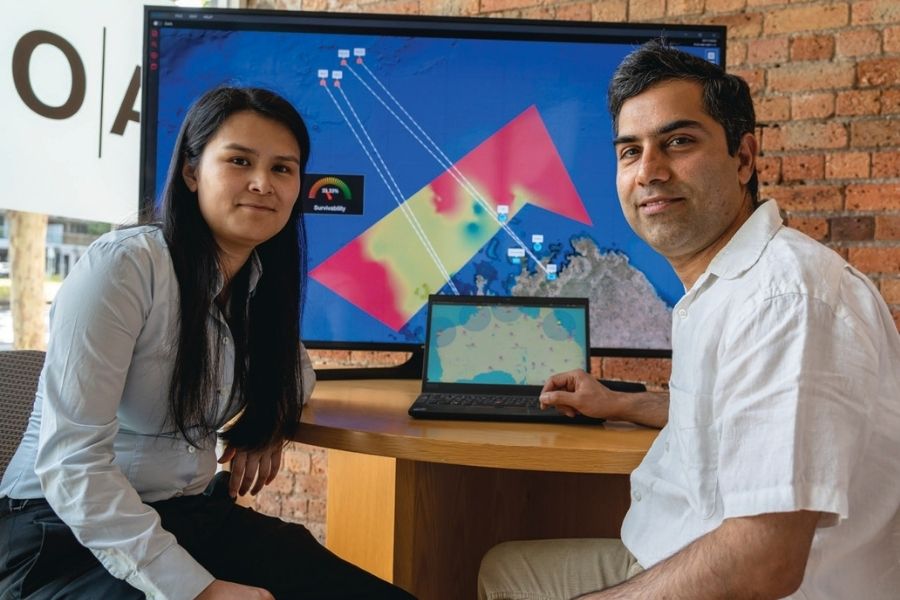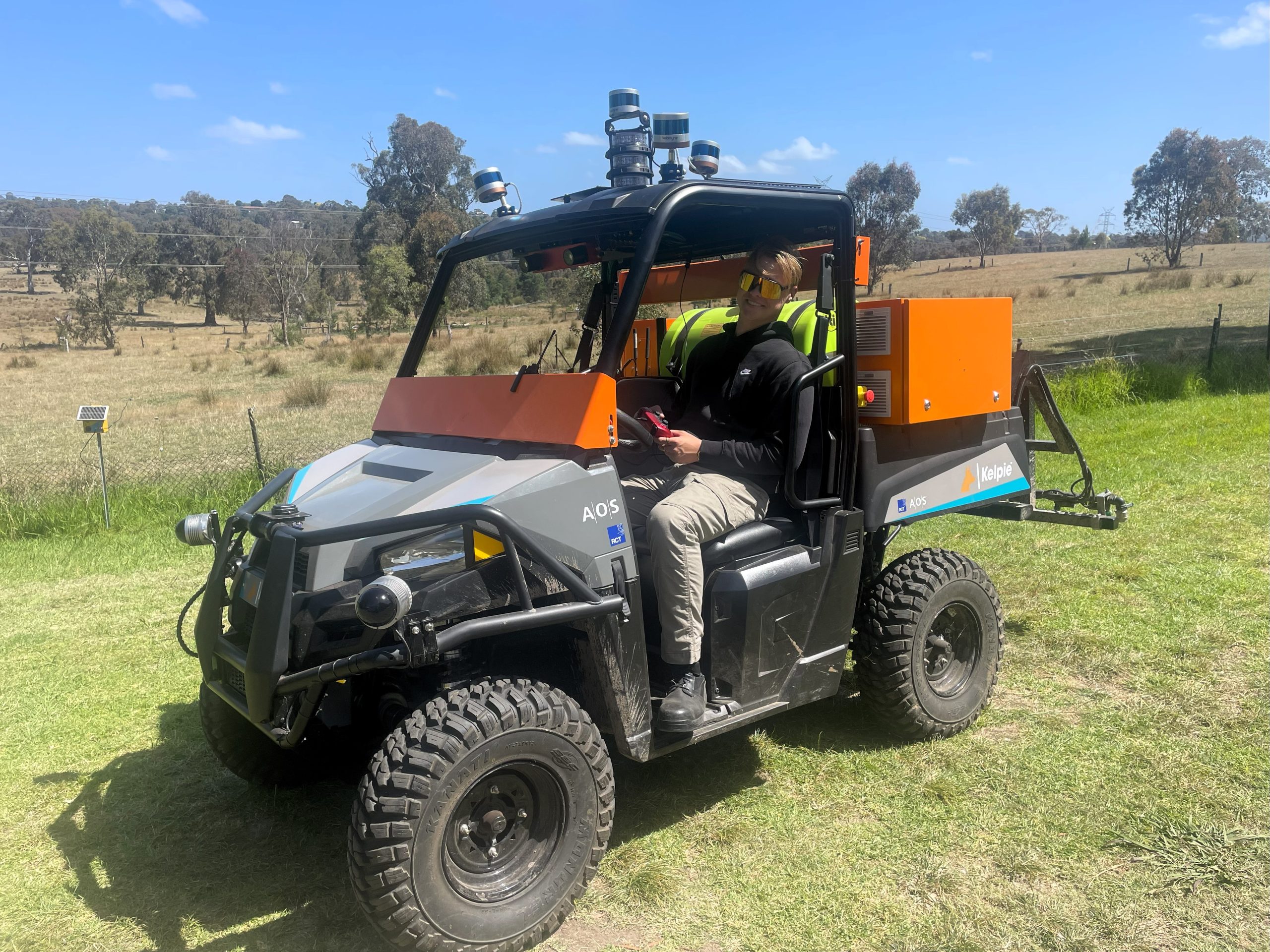Originally published in Defence Science and Technology Group (DSTG) OUTLOOK 2023.
The Island of Singapore fell to the Japanese Army on 15 February 1942—one of the greatest military defeats in history. The British confidently assumed that the Japanese would launch a maritime attack, so all the defences pointed out to sea. The Royal Navy’s presence at Singapore was strong, led by the modern HMS Prince of Wales and the Repulse. Singapore was supposedly impregnable as a fortress.
It was inconceivable to British military planners that the island could be attacked any other way—least of all through the jungle and mangrove swamps of the Malay Peninsula. However, that is how the Japanese attacked.
They conquered a numerically superior Commonwealth force in a week.

Commonwealth commanders walk under a flag of truce to negotiate their surrender in Singapore, 15 February 1942.
Many lessons were learnt from the fall of Singapore, which are still relevant to contemporary Australia’s defence.
One principal lesson is to ‘be prepared’ by considering many possible threat scenarios and how defences may be employed to counter them. This is even more critical in today’s environment, with hypersonic and swarm-based threats, as well as conventional missiles. Attacks on infrastructure may be accompanied by cyberattacks and electronic warfare attacks on defensive systems and their networks.
Consequently, the battle tempo is much faster, requiring fast and effective coordinated decision-making across all domains: land, sea, air, space, electromagnetic and cyber.
Modern Integrated Air and Missile Defence consists of complex and dynamic configurations of sensors, effectors and communication systems. Decision-making by Commanders, Air Battle Managers and the Battle Management System (BMS), which coordinates the defence, must deal with rapidly changing threats and contested electromagnetic environments.
A technique for evaluating potential threats
The BMS must operate across many engagements, and operate seamlessly across the multiple domains.
Intelligence preparation of the battlefield is an established process, and battlespace aspect design is a key tool for evaluating potential threats and then determining the optimal deployment of defensive systems, including mobile defences such as ships, aircraft and missile batteries, so that their effectiveness is maximised and critical assets are protected.
Enterprise Professor Len Sciacca from the University of Melbourne’s Defence Enterprise is leading Australia’s capability in battlespace aspect design.
To support the battlespace aspect design process, the University of Melbourne, Agent Oriented Software (AOS) Pty Ltd, and Australian Systems Research Pty Ltd, have partnered to develop a decision support tool. “The Dynamic Battlespace Aspect Design (DBAD) tool capitalises on the University’s research into optimisation and control techniques, and AOS’s research into Intelligent Software Agents,” Professor Len Sciacca says. “The tool aims to maximise the performance of the Threat Evaluation and Weapon Assignment (TEWA) function. This function is key to effective decision making in a battle management system—determining the scheduling and assignment of sensors, platforms and weapons to defeat the threat.”

Enterprise Professor Len Sciacca and AOS Group’s Managing Director Andrew Lucas.
Advanced TEWA techniques in development by the partnership can dynamically task sensors, communication networks and a wide range of effectors, including electronic countermeasures. The approach treats the TEWA function as an integrated part of adaptive networking, sensing and the dynamic reconfiguration of the battlespace. It employs stochastic control and optimisation to ensure each tactical decision builds on the previous decision, and maximises performance of the defensive system.
The DBAD tool addresses the emplacement of sensors and weapon systems that gives defended assets the highest probability of surviving projected threats.
Artificial intelligence-enhanced battle management systems
AOS and Australian Systems Research are working with the University of Melbourne to ensure that the DBAD concept is developed into an innovative product that can complement and enhance any BMS. Dr Andrew Lucas, AOS Group’s Managing Director, an Australian company specialising in artificial intelligence (AI) and autonomy, is leading the integration of intelligent software agents in various Defence applications.
“Intelligent software agents are a form of symbolic AI, conceived as a model for emulating rational human reasoning. They embody abstract constructs— beliefs, desires and intentions—so that humans can comprehend their reasoning. This is the basis for achieving Explainable AI. Consequently, they facilitate moving the human operator from in-the-loop to on-the-loop,” Dr Lucas says.
“Coupled with the optimisation and control techniques from the University of Melbourne, we can assist the battle manager in planning and operating battlespace configurations. That is, optimising the disposition of sensors and weapons that are best suited to the threat situation.”

University of Melbourne’s Estefania Yap and AOS Group’s Vik Grover collaborating on the Dynamic Battlespace Aspect Design (DBAD) tool.
Intelligent software agents
AOS has a unique approach to developing agent-oriented software that can streamline complex command and control systems that must collaborate between distributed decision-makers—both human and automated systems. Collaborative Belief-Desires-Intentions builds in software constructs that can incorporate goal or intent-based aims.
The University of Melbourne’s control algorithms fit into this paradigm to guide the systems into better decisions in selecting sensor-effector systems. DBAD will have broader application for cognitive electronic warfare, tactical BMS and even civilian applications such as firefighting resource scheduling and disaster management.
DBAD will have broader application for cognitive electronic warfare, tactical BMS and even civilian applications such as firefighting resource scheduling and disaster management.


